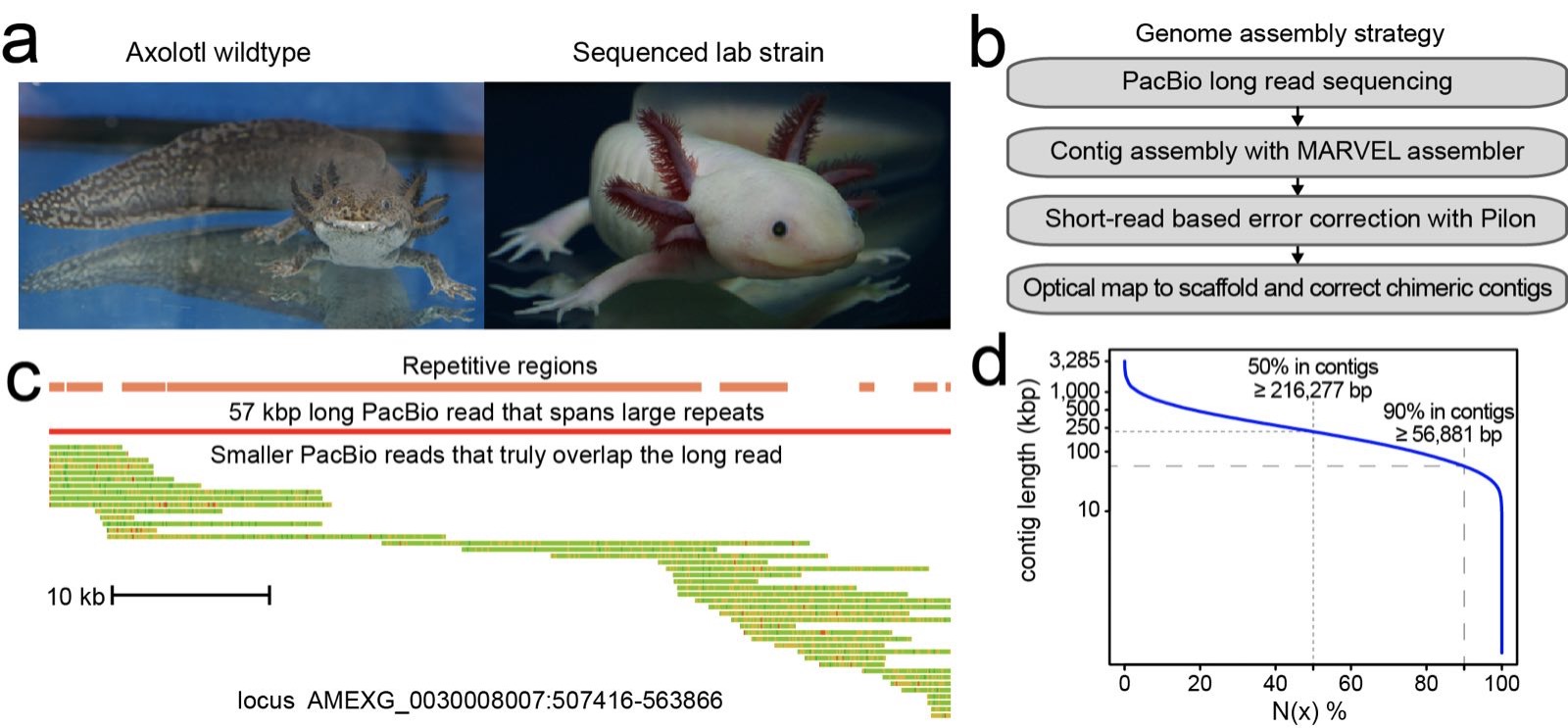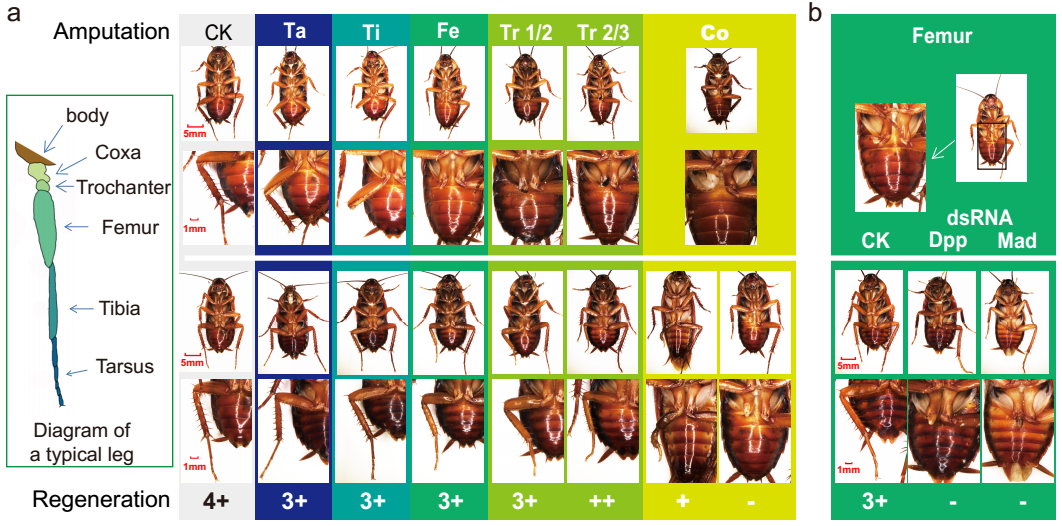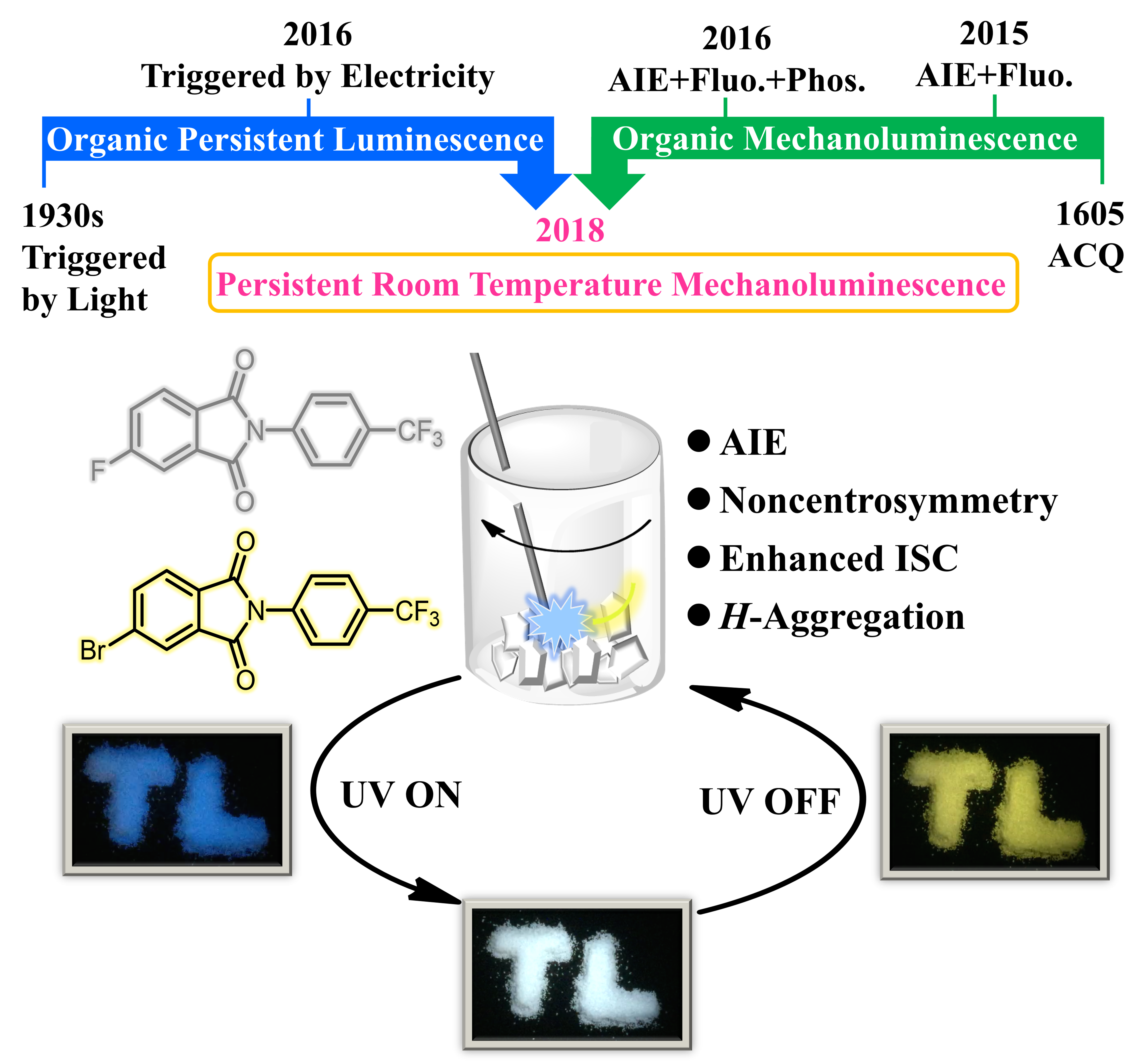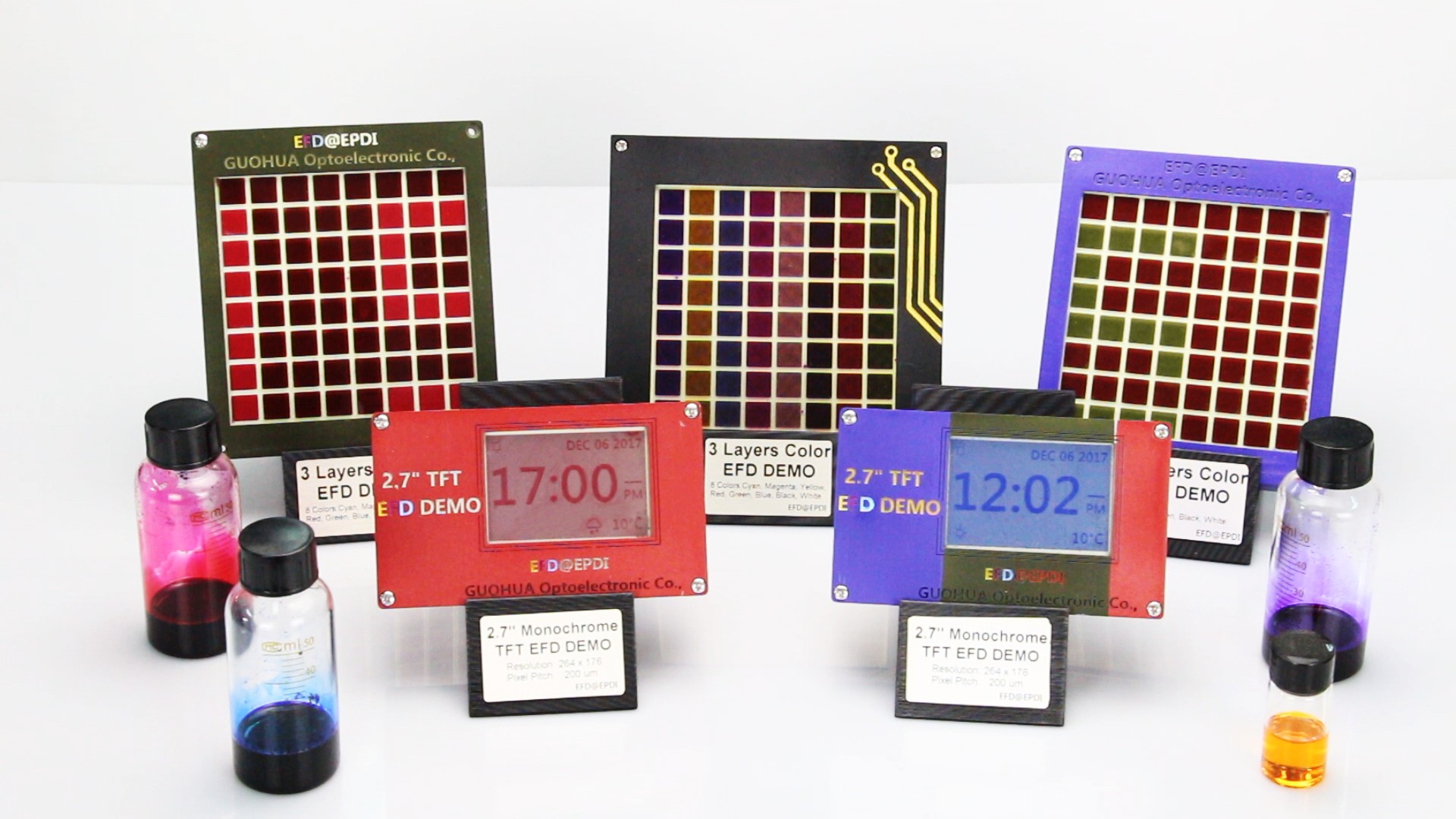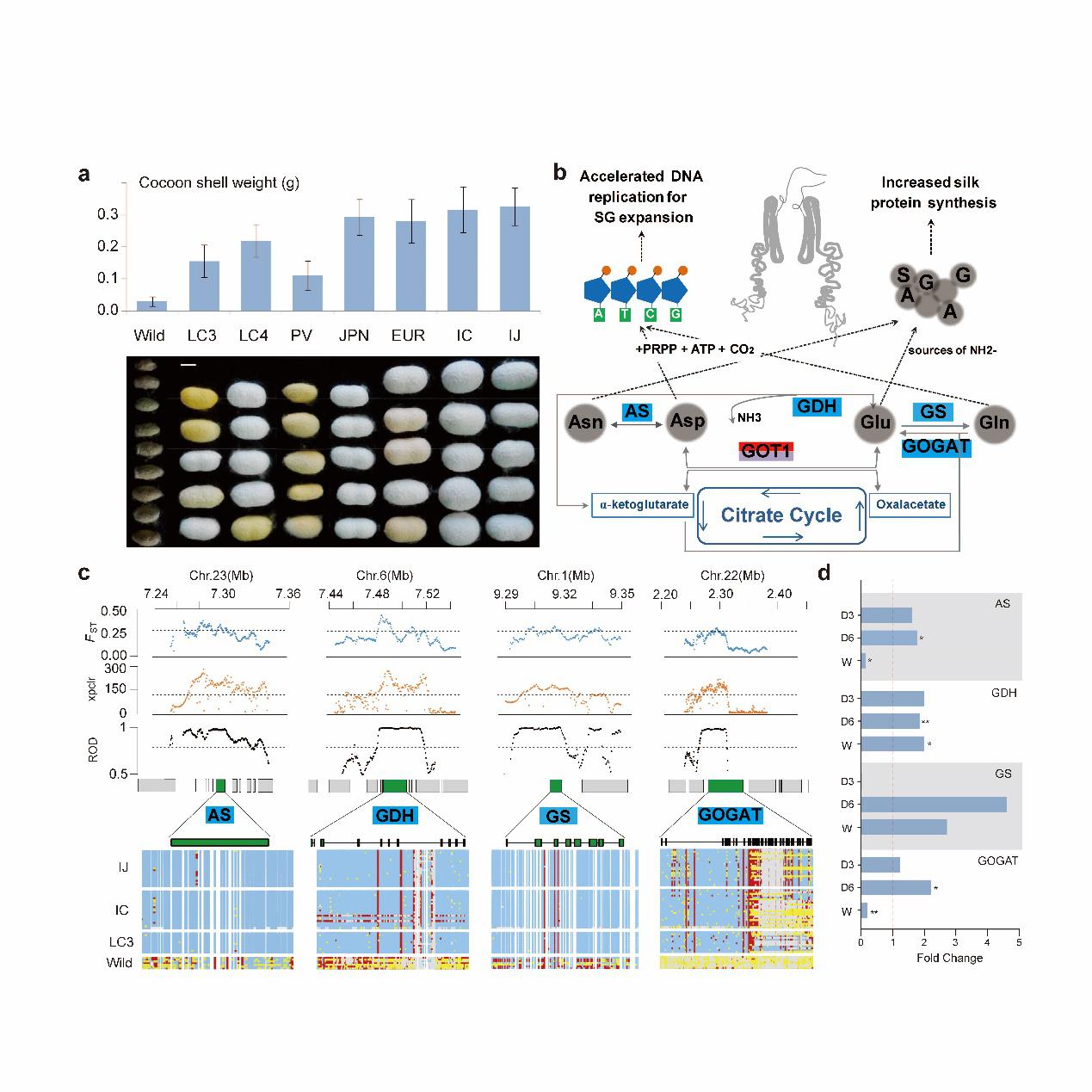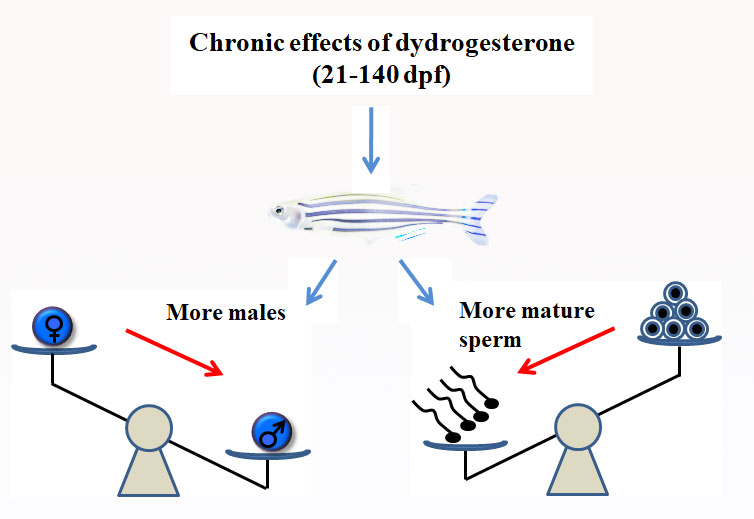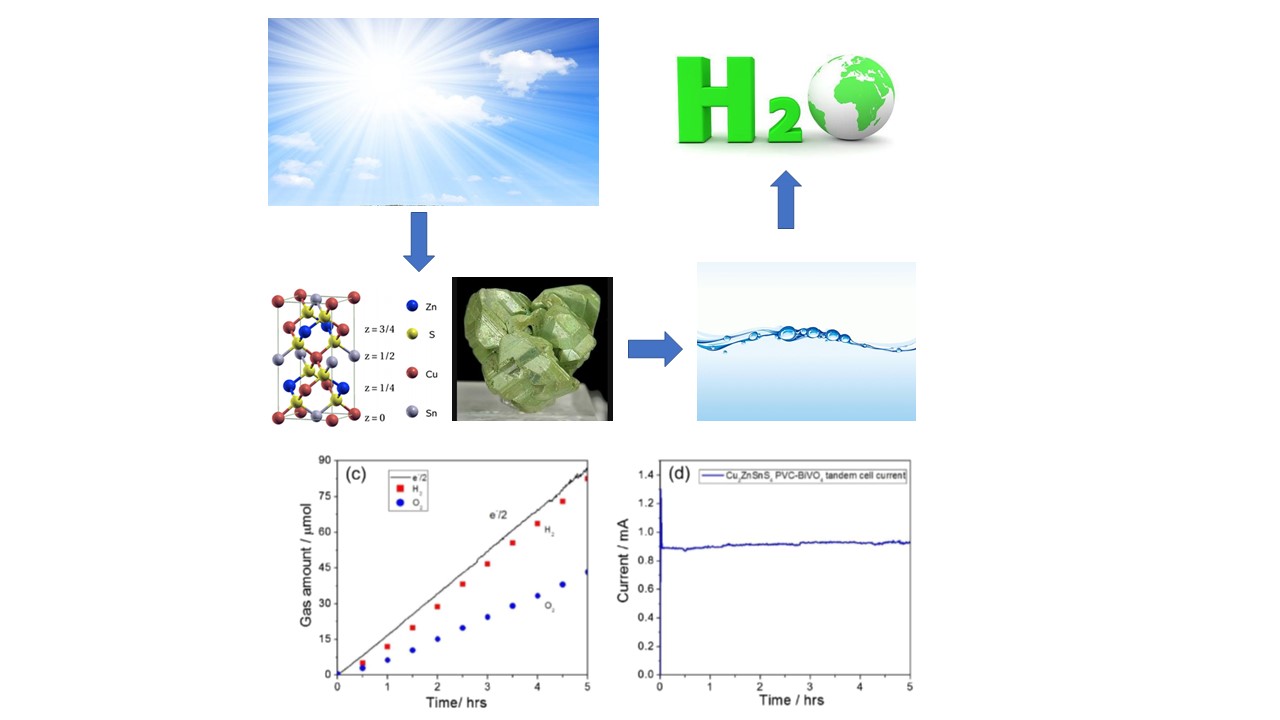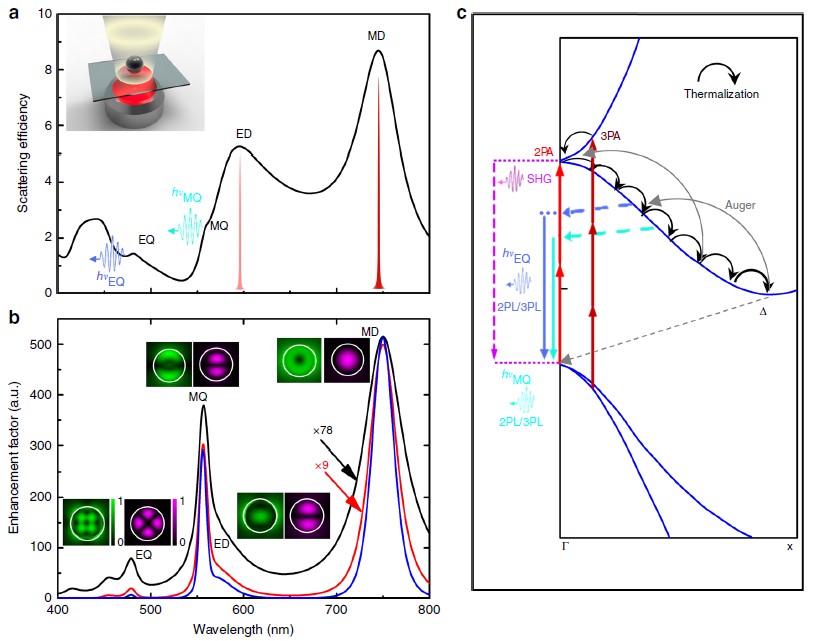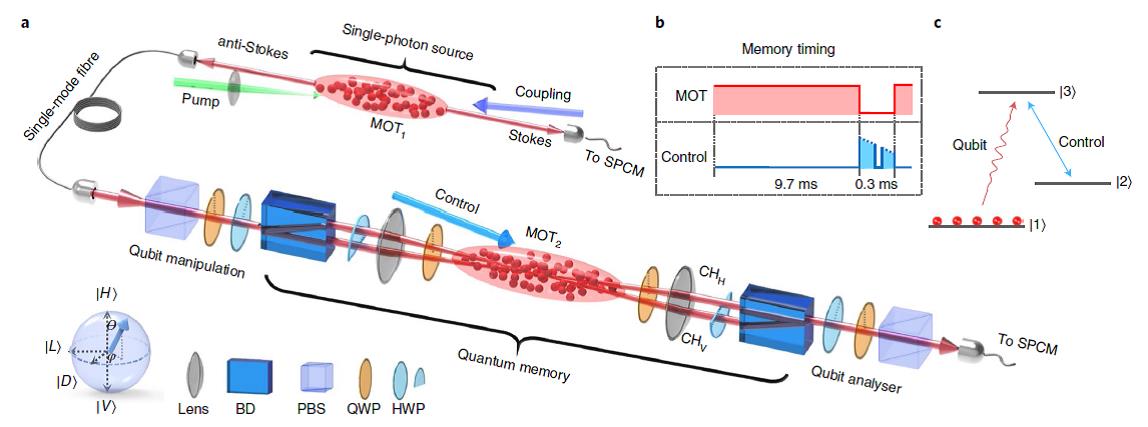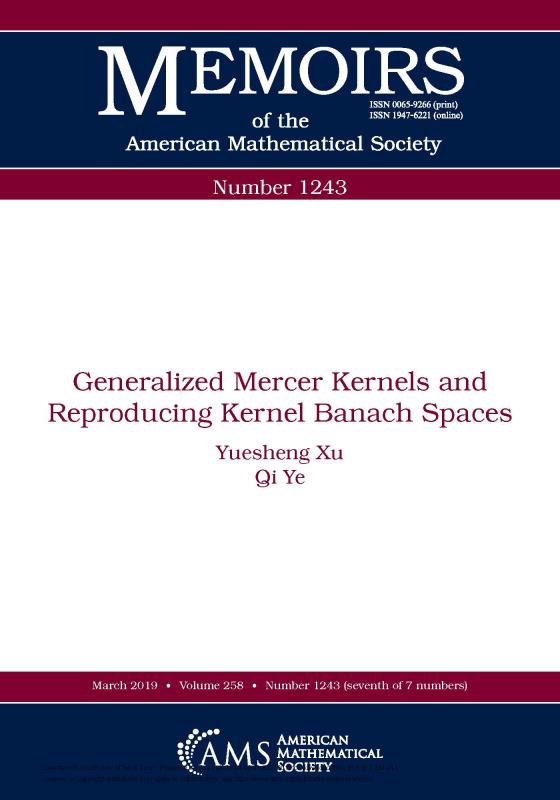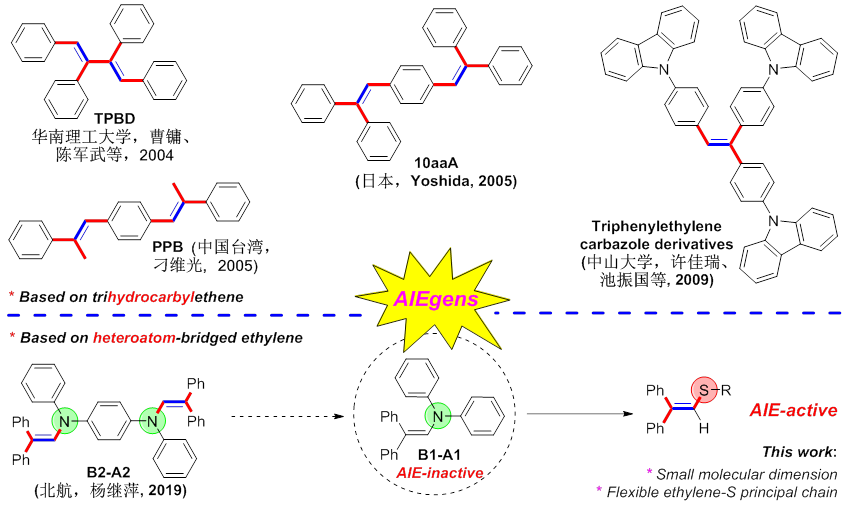
Likes
With the support from the Guangdong Province Functional Molecule Key Laboratory's opening project, Professor Wang Chaoyang of South China Normal University, together with Jiang Huanfeng of South China University of Technology, introduced arylsulfenyl groups onto the parent molecule DPE , making DPVS, a novel type of aggregation‐induced emission (AIE) luminogens (AIEgens). The relevant dissertation was published in the top chemistry journal Angew Chem Int Ed (Figure 5, DOI: 10.1002/anie.201914333). The first author of the article is Wang Bowen, a master's student of the School of Chemistry of South China Normal University.
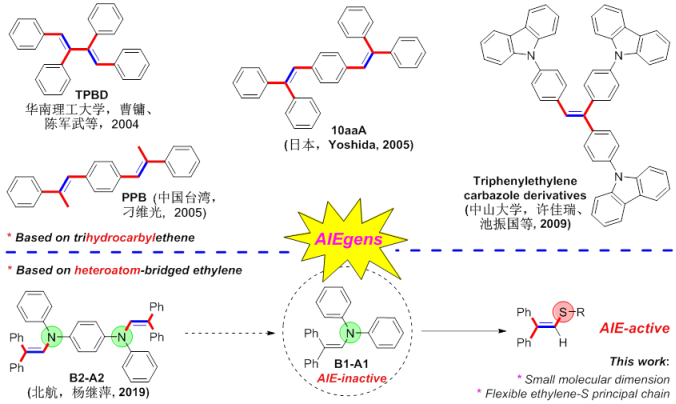

The phenomenon of aggregation‐induced emission (AIE) was discovered by Tang Benzhong's research group, and has attracted much attention as it has a wide range of applications. By contrast, the synthesis and design of aggregation‐induced emission luminogens (AIEgens) has been such a challenging subject that progress is made slowly.
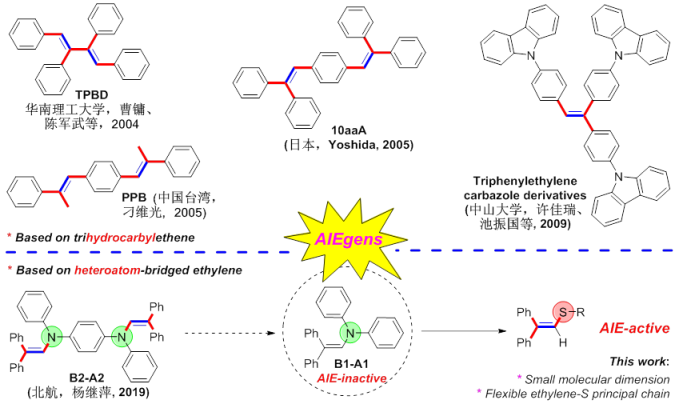
Accrding to the research, an efficient and readily scalable thioetherification between 1,1-diphenylethene (DPE) and sodium arylsulfinate is developed for synthesis of 1,1-diphenylvinylsulfide (DPVS) with a yield up to 99%. The photophysical properties of DPVS show that the introduction of arylsulfenyl groups onto the parent molecule DPE makes DPVS a novel type of aggregation‐induced emission (AIE) luminogens (AIEgens) with large Stoke's shift (up to 188 nm). These DPVSs are of AIE characteristic due to the restriction of intramolecular motions (RIM), proved by crystalline structure analysis. Importantly, the AIE performance of DPVS can be applied to sense picric acid, a nitroaromatic explosive in aqueous system by “turn-off”response.
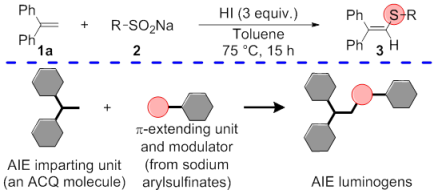
The completion of this dissertation has been the result of joint assistance and support, especially from Prof. Xu Bingjia who selflessly spared no efforts to provide full help in AIE performance testing.
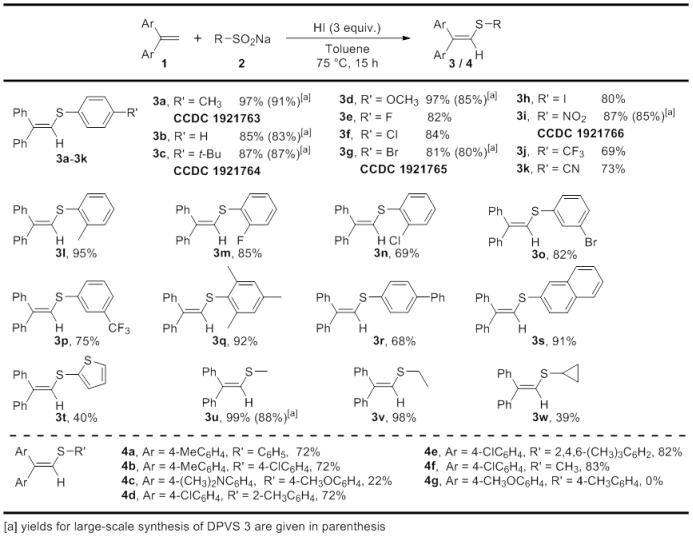
Translated by: Tan Yanping
Proofread by: Edwin Baak
Reviewed by: Li Jianru
What to read next:
